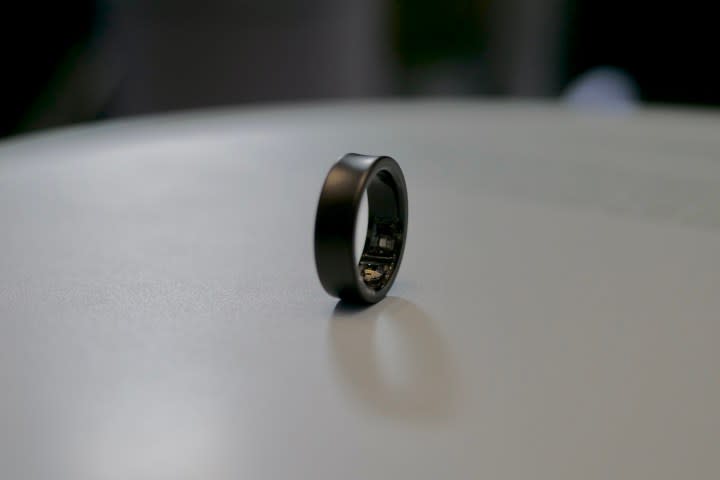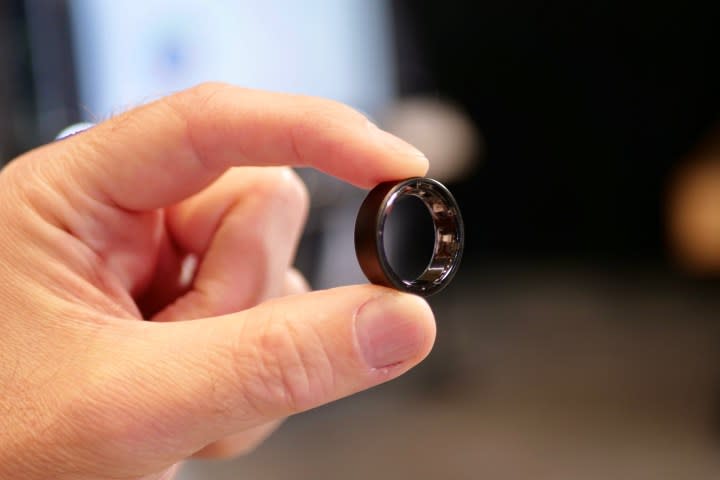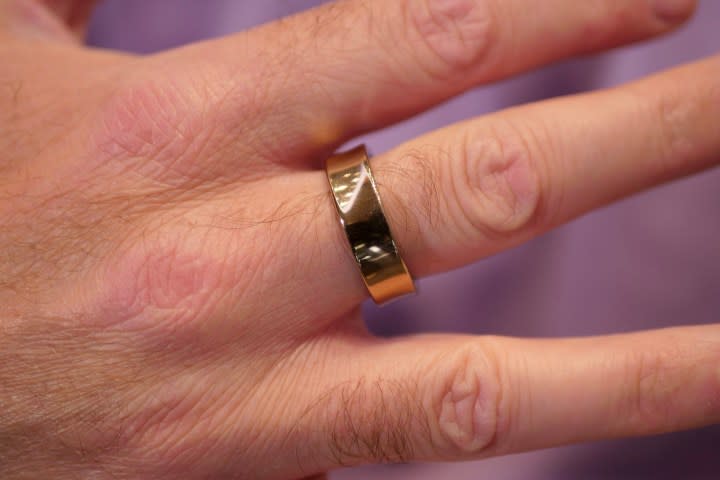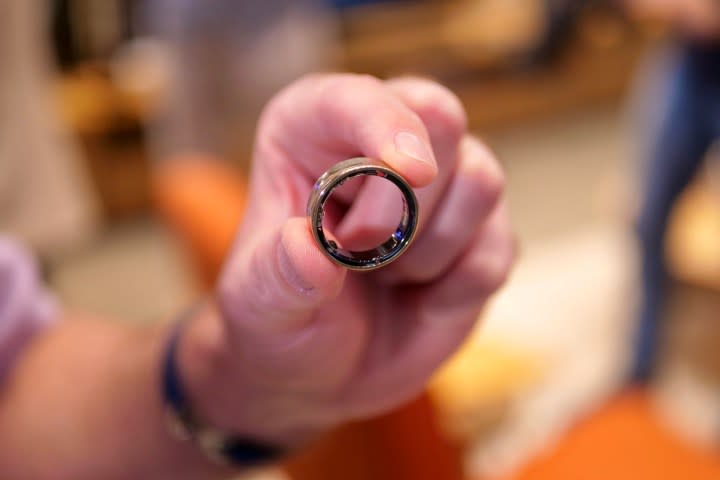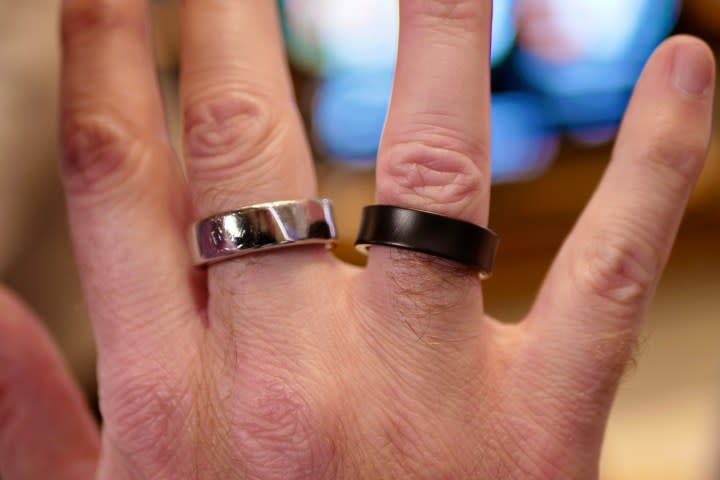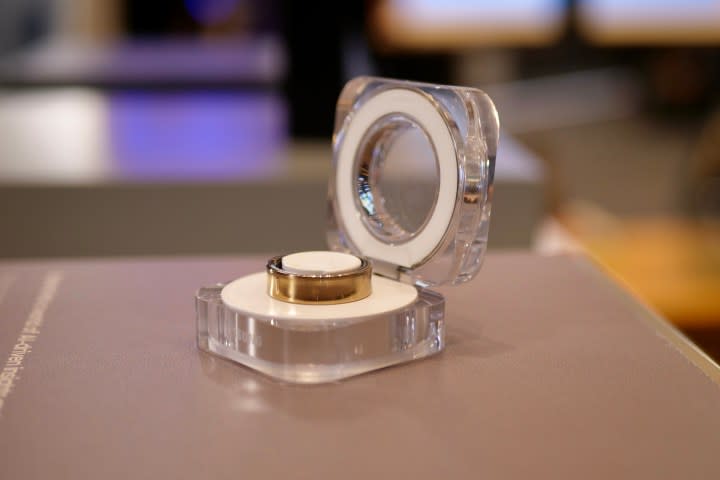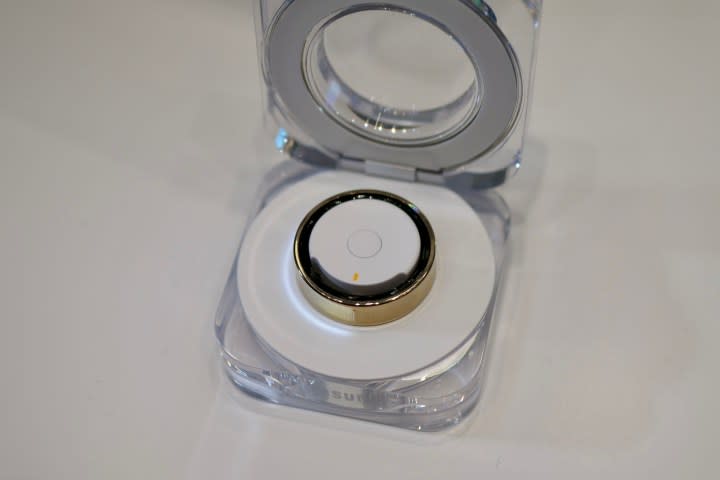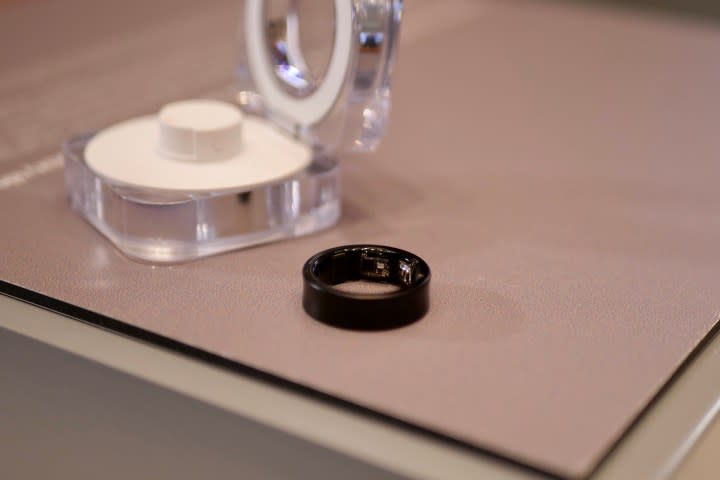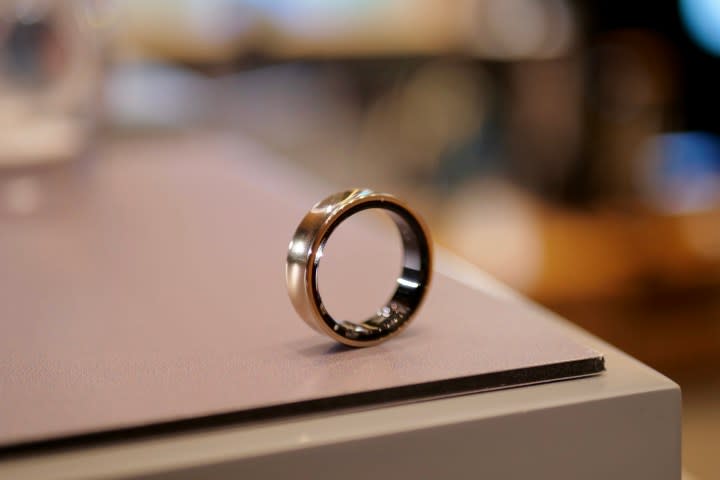I wore the Samsung Galaxy Ring. Here’s why the Oura Ring is in trouble
I’ve only worn the Samsung Galaxy Ring for a few moments, but I can already tell you that the Oura Ring is in trouble.
It’s not because of the technology — it seems Oura’s still winning there — but because of the fit and the design. When we’re talking about smart jewelry, those are the most important aspects of all. And Samsung seems to have nailed it.
It’s all in the Galaxy Ring’s design
I’ve worn the Oura Ring for three years, and am very familiar with the design and how it fits on my finger. It’s excellent and never uncomfortable, but it looks and feels a bit old next to the Galaxy Ring. Samsung has cleverly gone for a concave shape for its first smart ring, which means it’s ever-so-slightly indented on the surface, and the edges stand just a little proud. What this does is offer a degree of protection against scuffs and scratches on the main section (while increasing the likelihood of scratches on the edges). More importantly, the shape gives the ring character.
This really matters, and it’s even more important here than it is in smartwatches. I’ve got to want to wear a smart ring. I tried the Galaxy Ring in the same size 11 as my Oura Ring, and in a smaller size that fit another finger, and it is noticeably thinner and lighter than the Oura Ring. This is quite a feat considering the seemingly minute differences involved here, and it contributes a lot to the Galaxy Ring appearing more modern than the Oura Ring.
I couldn’t really feel the 2.6mm thick ring between my fingers, and even at its heaviest, it weighs just 3 grams. The titanium shell looks brilliant in black, which is just the right amount of shiny and matte. Even the gold isn’t too eye-catching, so it won’t only be for statement makers.
I don’t notice the Oura Ring on my finger all that much, but that’s mostly because I’m used to it. It does take a little time for it to become part of you, and I expect this period of adjustment to be far shorter with the Galaxy Ring because Samsung has nailed the size and weight. I like that the design isn’t basic like the Ultrahuman Ring Air and isn’t a direct copy of the Oura Ring either.
It’s suitably attractive, yet not overly showy. I love that it has an actual design. Samsung is flexing its wearable design prowess this year with both the Galaxy Ring and the Galaxy Watch Ultra, and I think it’s going to win plenty of new fans because of it.
No subscription, but less tech
The Galaxy Ring is an expensive piece of technology, but Samsung made a point of telling journalists during a briefing on the product that it won’t charge a subscription fee to access its app or take advantage of its Galaxy AI features. This will also be a cause for concern for Oura, as it continues to charge a monthly fee to see all the data in its app.
However, I really like the Oura Ring app, and I don’t feel the same way about Samsung’s solution. The Galaxy Ring will use the Galaxy Health app, just like the Galaxy Watch series. It’s not bad, but it’s not quite as good as Oura’s focused, simple-to-understand app.
It can’t quite match the Oura Ring in terms of technology and health-tracking algorithms, either, at least from what I understand. I checked with Samsung about the sleep-tracking features, which is one of a smart ring’s biggest selling points, and the Galaxy Ring matches the Galaxy Watch’s sleep-tracking ability.
Sadly, it’s more basic than the Oura Ring’s sleep tracking as it does not include heart rate variability data or resting heart rate, two key metrics that help you understand your overall health. The app shows your heart rate and skin temperature collected by the Galaxy Ring and breaks down sleep stages. It also records disturbances like snoring, so it’s not overly basic. That said, I’ll likely miss the insights I get from the Oura Ring’s data.
It’s great to see Samsung take cycle tracking seriously. It has worked with the popular app Natural Cycles to include most of its technology in Samsung Health when connected to the Galaxy Ring — something Oura has done since 2022. There’s also an advantage if you wear both a Galaxy Ring and a Galaxy Watch, where the Ring’s battery life will be extended by 30% due to the smartwatch taking over some of the heart rate tracking. The Galaxy Ring also gets a gesture control when connected to a Galaxy smartphone, with a double pinch (now, where have we seen that before) activating phone features like taking a photo.
The Oura Ring has met its match
The design is a key strength of the Galaxy Ring, and Samsung’s presentation goes a step beyond the Oura Ring, too. It comes in a transparent charging case that reminded me of Nothing’s case for its earbuds. It’s also where you store and charge the ring. Samsung estimates seven days from a single charge and an 80-minute recharge. The case itself has both USB-C and wireless charging. I especially liked the glowing ring around the ring itself when you place it inside, which indicates the amount of current charge. It’s classy and cool.
Why do I think the Oura Ring is in trouble despite the technology perhaps not being quite as good? It’s because the Galaxy Ring has a different task ahead of it than the Oura Ring. The Galaxy Ring has to convince the masses that smart rings are worth wearing and worth buying.
To do that, it needs to look and feel like a desirable piece of tech-laden jewelry that someone will willingly wear 24 hours a day and spend a considerable sum of money on. I think Samsung has succeeded here, and when it wins from a visual and tactile perspective, the underlying tech being slightly behind the direct, but less well-known competition may not matter.
However, once it has convinced you to wear and buy it, then it has to keep you around with the right tech and app. There’s nothing much here that’s new beyond what you get from wearing a Galaxy Watch, and its sleep tracking does seem to be a step behind the Oura Ring. We won’t know how Samsung’s Health app and features translate over to the Galaxy Ring until we try it out, but there’s no doubt in my mind that the Galaxy Ring is off to the very best start.
Until now, the Oura Ring hasn’t had a true challenger. But thanks to the Galaxy Ring, that has finally changed.

